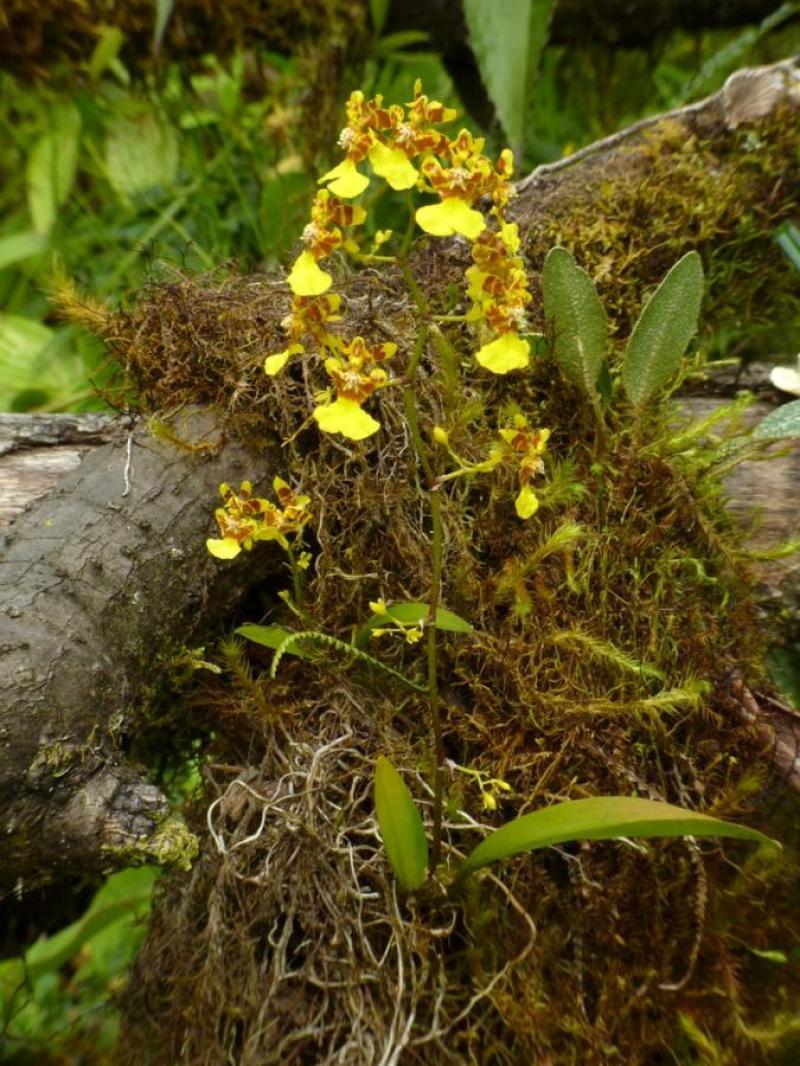Oncidium pentadactylon
Also known as: The Five Fingered Oncidium or Heteranthocidium aspecum Heteranthocidium millei Oncidium aspecum Oncidium millei in the subfamily: Epidendroideae
Native to: Cajamarca - Peru Piura - Peru Provincia de Loja - Ecuador
General Information
The Five Fingered Oncidium is a small sympodial cold to warm growing epiphytic or terrestrial orchid belonging to the sub family Epidendroideae native to Peru and Ecuador.
Plant Description
Sympodial. Grows to 30cm. Each new growth has numerous elliptic lance shaped leaves that grow to 2-30cm long. Pseudobulbs grow to 1.5-7cm
Care Notes
These orchids have a fine root system that can quickly die back if left dry for too long, but also does not like to be kept wet, so water regularly but ensure that the mix is dry before watering.
Climate
Grows at high elevations. Rainfall ranges from 23mm to 109mm per day, heaviest in October and lightest in January. Humidity ranges from 73% to 77%, highest in October and lowest in January. Temperature ranges from 7C to 21C, highest in May (10C to 21C) and lowest in February (7C to 18C).
Fertiliser
These plants do well with slow release fertiliser at the rate of 2-3 pellets per cup (250ml) of media. Additional fertiliser during the growth period may be beneficial, but not necessary.
Potting
These plants can be sensitive to repotting though should not require repotting regularly. Repotting should be done when the mix has broken down to the point that it doesn't absorb water or holds onto water for far too long, usually the plant shows a decline in growth as well. Repotting is best done after the growing season when the plant has died back.
The mix should be free draining, with a blend of 30% inorganic ingredients such as coarse sand, gravel or perlite, mixed in with about 70% organic ingredients such as peat, leaf litter or decomposed bark. Avoid commercial potting mixes as they can vary wildly and may contain "wetting agents" that can hold onto water for loo long, causing rotting and stunted growth.






